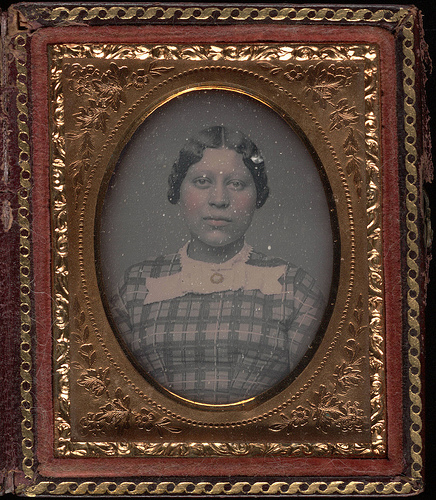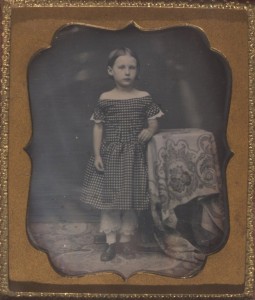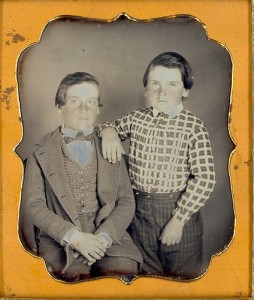


1855 photo of woman in gingam dress
Who need be afraid of the merge?
Undrape . . . . you are not guilty to me, nor stale, nor discarded,
I see through the broadcloth and gingham whether or no,
And am around, tenacious, acquisitive, tireless . . . . and can never be shaken away (Leaves of Grass, 1855 edition, p. 33)
Gingham is a clothing fabric in a plaid weave. It is adapted from the Malay word “genggang” which referred to stripes. Gingham was first exported to England in the 17th century, and later to the American colonies. In the 19th century, gingham was produced in the southern American states. In Whitman’s time, gingham would have consisted of two color fibers woven together to produce a striping effect.


It was used for handkerchiefs, aprons, dresses, beachwear, curtains, military uniforms, umbrellas, and other accessories.
Gingham summer dresses “suitable for the afternoon” were popular in Whitman’s time. Gingham was the cloth of democracy. Photographs and daguerreotypes from the time show that gingham was a casual cloth worn by men, women, adults, children, blacks and whites.
The line containing the word “gingham” suggests a sensual x-ray vision. Whitman’s universal “I” has seen us naked and sees our divine perfection. We have nothing to be ashamed of. He invites us to get naked with him.
